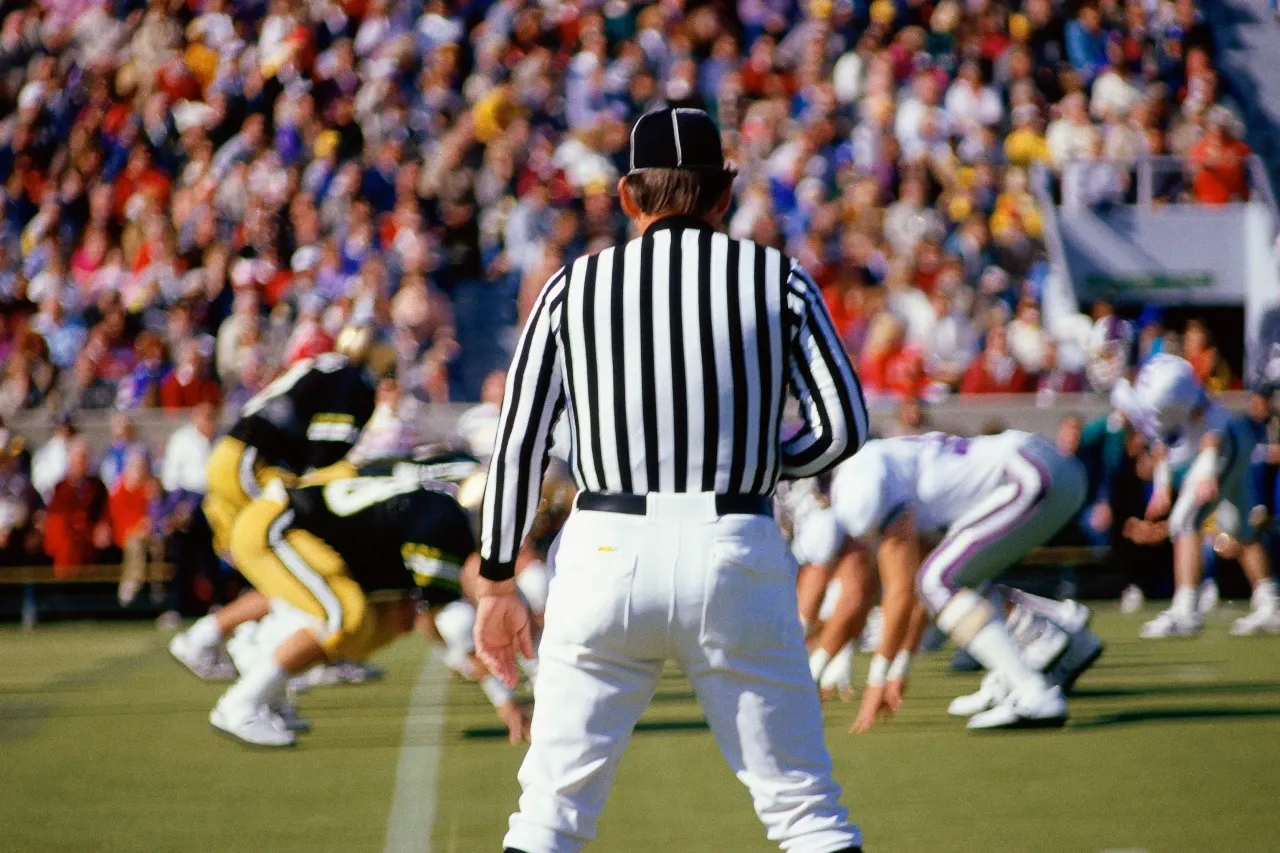On the surface, sports betting might seem like a straightforward deal. Predict the correct result and earn a sweet profit while doing so. However, to become a successful bettor, you have to be aware of all the little details, no matter how complex or simple they are. After all, being a good picker doesn’t necessarily mean you’ll be a profitable bettor.
Among these key concepts, bankroll management is arguably the most important one. Proper bankroll management ensures your bankroll remains safe and even potentially increases, while a lack of it can leave you out of money to bet with.
Bankroll management in sports betting is easy to understand but difficult to master and requires many virtues, including patience and discipline. Keep reading to learn more about the details behind bankroll management, how to manage (and even increase) your bankroll, as well as why it’s such an important aspect of sports betting.
What is a bankroll in sports betting?
Let’s start with some basics; a bankroll is essentially the amount of money you have available for your sports bets. It can range from a few hundred dollars to however much you can afford and can comfortably risk losing. Remember to always prioritize your living expenses, and don’t just gamble away your entire paycheck.
Some sports bettors choose their bankroll at the start of the season, whereas others opt for a weekly or monthly budget. In any case, setting and sticking to a specific money amount for sports betting is a crucial first step to becoming a better overall sports bettor.

Aspects of bankroll management
Bankroll management isn’t necessarily difficult to comprehend. But there are just so many factors that go into it. So, I figured that gathering some of the most important aspects of bankroll management will help you in your game:
Unit
A “unit” is a term you’ll often come across on sports betting websites and refers to the standard amount of money you would place on a single bet. Units are very useful among sports bettors, as they communicate how much of your bankroll you should wager on a specific bet.
Having an established means to express your betting amount is essential because each bettor has a different bankroll and financial circumstances. For instance, someone with a $10,000 bankroll may place a $500 bet on a strong favorite, but it doesn't mean you should do the same with your $1,000 bankroll.
Bet size
The bet size is basically the value of your own “unit”. It’s a percentage of your bankroll you will be wagering on each bet, based on how conservative or aggressive you want to be. Conservative sports bettors, or those with very large bankrolls, usually have a unit size of 1-2% of their bankroll.
Players with smaller bankrolls can usually be a bit more aggressive to make a significant profit. Thus, you can use a unit size up to 5%, although I’d advise you not to go beyond that.
Tracking
Another fundamental aspect of bankroll management is proper tracking. You won’t believe how many sports bettors don’t track their bets and think they are profitable, only to find out they’ve lost tons of money they had forgotten about. You’ll always remember your big wins, but you’ll probably want to forget huge losses as soon as possible.
Nevertheless, if you want to be successful in sports betting, you must be ready to track every single bet you make so you can keep an eye on your stats and return on investment (ROI). You don’t need anything fancy when you’re starting out. Just use a simple spreadsheet where you input your starting balance, the amount you wager, and the odds of the bet.
Betting strategies for better bankroll management
Now that you understand a bit more about how bankroll management works, let’s examine a few common betting strategies that will help you adhere to better bankroll management in sports betting:
Flat bet strategy
The flat bet model is the most commonly used betting strategy for bankroll management, thanks to its simplicity. You just need to decide your unit size beforehand and wager the same amount of money on every bet, regardless of the odds or your particular betting form.
Another factor that goes into the flat betting model is whether you want “to risk” or “to win” one unit. “Risking” means you’re flat-out betting one unit on any odds, whether it’s a strong favorite or an underdog.
If you’re looking “to win” a unit, you’ll need to calculate how much you bet every time, so your net profit is one unit. For example, if your unit is $100, and you want to place a bet on -150 odds, you’ll need to wager $150 to win $100 (one unit).
In general, most sports bettors that follow the flat bet strategy go for “to win” bets on favorites and “risk” bets on underdogs. But feel free to use whichever approach fits you best.
Percentage strategy
The percentage betting model follows the same principles as the flat bet strategy, except that your bet size fluctuates daily. Instead of maintaining the same bet size, you keep the same percentage of your bankroll as your bet size for every bet.
For instance, let’s assume you’re running on a $1,000 bankroll with an aggressive 5% unit size, which means your initial bet size is $50. If your first bet is successful, your bankroll will go up to $1,050, so your next wager needs to be $52.5 (5% of $1,050).
The percentage betting strategy makes your winning streak more profitable since you increase your bet size every time you win. But it can also lead to lengthier downswings because you’ll need to lower your bet for every consecutive loss.
Kelly criterion
The Kelly Criterion is a formula that allows you to take advantage of your edge or confidence in sports betting. To use the Kelly Criterion, you’ll need to calculate the probability of your bet to win and input it into the following formula:
Wager Percentage = (Net decimal odds * Probability to win - Probability to lose) / Net decimal odds
Let’s look into a simple example to help you understand the formula a bit better. Let’s assume you want to bet on a -200 favorite. The standard decimal odds are 1.50, while the net decimal odds are 0.50 (since decimal odds also return your original stake).
The implied odds for this bet are 66.67%. However, your study shows you a potential 70% chance for a win. If you put all this in the wager percentage formula, you'd get (0.5*0.7-0.3)/0.5, which equals 0.1. Therefore, the Kelly Criterion suggests you bet 10% of your bankroll on this single bet.
If this seems too much, you can always use Kelly Criterion calculators online. You can also utilize the Half Kelly or Quarter Kelly if you want a more conservative approach.
Why is bankroll management in sports betting so important?
So why all this hassle? Why should you go out of your way to learn so many aspects and strategies about bankroll management? Like I always say, sports betting is far more complicated than just placing bets on teams to win. There are a lot of factors that make a successful sports bettor, and bankroll management helps with several of them.
Manage losing streaks
Losing streaks is something you’ll have to learn to live within sports betting, just like any other form of gambling. Yes, you can minimize your losses by thoroughly studying before you place each bet, but ultimately, there will come times when you’ll lose a lot of consecutive bets.
That’s where bankroll management comes in. When you use bankroll management, you only risk a very small percentage of your total bankroll in each bet, which means you won’t be losing as much money even during the worst losing streaks.
Avoid losing your entire bankroll
One of the most important reasons for exercising proper bankroll management is to avoid running out of money to bet. Bankroll management is meant to help you place consistent bets and not just go all in on a favorite you feel will win.
Additionally, bankroll management will help you avoid “chasing losses” or placing wild bets on sports and leagues you’re unfamiliar with, which can easily ruin your bankroll.
Increase your bankroll
Just like losing streaks, you can also run a very hot winning streak in sports betting, and that’s where proper management can help you increase your bankroll. If you’re running well, it sometimes feels like you can just bet however much you want and still win.
But playing like this can lead you to lose your profits and even your bankroll. So, bankroll management shows you the proper way to increase your bet size by small increments to profit from winning streaks without taking unnecessary risks.
Overall, bankroll management is a simple concept to understand. But employing it flawlessly is a whole different beast. It takes a lot of self-control, and you need to treat it as a numbers game instead of betting with your heart.
🏆 Read next: Whop's best sports betting Discord servers

![Top 24 best NBA picks Discord servers [July 2025]](/blog/content/images/size/w600/2024/01/Top-10-Best-NBA-Picks-Discord-Servers.webp)
![Top 44 best sports betting Discord servers [July 2025]](/blog/content/images/size/w600/2023/12/sports-discords.webp)
![Top 24 best PrizePicks Discord servers [July 2025]](/blog/content/images/size/w600/2024/09/Best-PrizePicks-Discord-Servers.webp)
